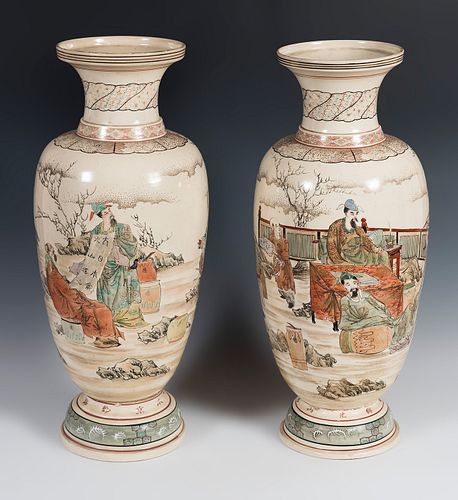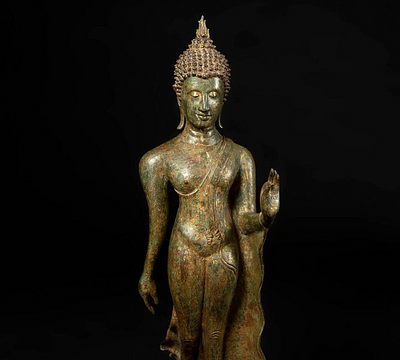Pair of vases, late nineteenth century. Japanese Satsuma ceramics.
Lot 16
About Seller
Setdart Auction House
Carrer Aragó 346
Barcelona
Spain
Setdart Subastas was born in 2004 and is currently the first online art auction in Spain with solidity, prestige and reliability guaranteed by our more than 60,000 users. Setdart has a young, dynamic and enterprising team ready to successfully manage the purchase and sale of art works through custom...Read more
Estimate:
EUR€300 - EUR€350
$322.58 - $376.34
Absentee vs Live bid
Two ways to bid:
- Leave a max absentee bid and the platform will bid on your behalf up to your maximum bid during the live auction.
- Bid live during the auction and your bids will be submitted real-time to the auctioneer.
Bid Increments
| Price | Bid Increment |
|---|---|
| EUR€0 | EUR€10 |
| EUR€200 | EUR€25 |
| EUR€500 | EUR€50 |
| EUR€1,000 | EUR€100 |
| EUR€3,000 | EUR€200 |
| EUR€5,000 | EUR€500 |
| EUR€10,000 | EUR€1,000 |
| EUR€20,000 | EUR€2,000 |
| EUR€50,000 | EUR€5,000 |
About Auction
By Setdart Auction House
Nov 22, 2021
Set Reminder
2021-11-22 10:00:00
2021-11-22 10:00:00
America/New_York
Bidsquare
Bidsquare : 22nd November - Oriental Art
https://www.bidsquare.com/auctions/setdart-auction-house/22nd-november---oriental-art-7877
Setdart Auction House sofia@setdart.com
Setdart Auction House sofia@setdart.com
- Lot Description
Pair of vases, late nineteenth century. Japanese Satsuma ceramics. Measurements: 56 x 22 cm. Pair of vases made in Japanese Satsuma pottery. They present figurative decoration with scenes of dignitaries, combined with vegetal ornamentation. The Satsuma pottery is made since the early eighteenth century on the island of Kyushu, and was a type of great Korean influence, since in fact it was even brought to the Korean potters pottery. In the second half of the 18th century it became so popular in Japan that the production center was moved to Awata, near Kyoto. Thus, there is a local production in the eighteenth century, although the pieces for export in the nineteenth century, already produced in Awata, will have a greater importance. The paste is not porcelain, but a very light, porous light terracotta. The glaze is feldspathic, mixed with wood ash. The most characteristic feature of Satsuma pottery is its decorative richness, sometimes even exaggerated. Generally the motifs are brushed in gold glaze, as we see here, a novelty compared to previous styles. In addition, the ornamentation is completed with very varied polychrome enamels: green, red, white, turquoise, pink and, above all, "gosu" blue, the most sought after of all, with a very dark tone and typical of the best Satsuma of the 19th century. In addition, these are very thick glazes, which even have relief, as we see in these pieces. Regarding the decorative motifs, they were very varied, from the floral ones that dominate the domestic production to the figurative ones, the most common in the pieces destined for export.
- Shipping Info
-
In-house shipping available. Please inquire at admin@setdart.com.
-
- Buyer's Premium



 EUR
EUR CAD
CAD AUD
AUD GBP
GBP MXN
MXN HKD
HKD CNY
CNY MYR
MYR SEK
SEK SGD
SGD CHF
CHF THB
THB










